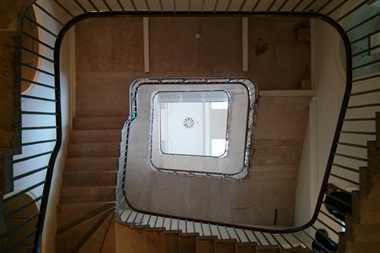Last year was the worst on record for UK retail and the new year has not exactly got off to a flying start.

The Mothercare and Links of London brands both disappeared from the high street last week, the Beales department store chain was on the brink of collapse as Property Week went to press, Debenhams is closing 19 stores and Mike Ashley’s GAME chain is shutting 40.
Others are clinging on, but only just. You have to fear for the likes of Jigsaw, which last week demanded a 30% rent reduction from its landlords, and HMV, which closed three stores at the weekend and is seeking rent reductions on 10 more. But while it has been a truly bleak mid-winter for many household retail names, are we witnessing the first green shoots of retail recovery?
In the second part of our bumper 2020 Vision forecast, opinions are divided. AEW’s Rob Wilkinson thinks the retail market will bottom out this year but doesn’t envisage a bounce-back – the long-term structural changes are too profound, he argues.
Most agree it will be a highly challenging year, pointing the finger at crippling business rates, the continued onslaught of online retail and fundamental changes to the way people shop as we hold on to our cash for a rainy Brexit or, prompted by issues such as the climate crisis, reduce our spending on everything from meat, plastic and fast fashion to flights and diesel or petrol cars.
However, as ever in this most resilient of industries, others spy opportunities – massive opportunities. AshbyCapital’s Peter Ferrari expects consumer confidence to return, retail sales to grow and online and physical retail to continue to converge, with the biggest winners those investors that rework their retail portfolios to meet the evolving needs of the conscientious shopper. Schroders’ Jessica Berney agrees that retail centres that identify the right investment opportunities will thrive, particularly those that benefit from growth drivers such as rapid urbanisation, technology and demographics, and Queensberry’s Paul Sargent says it is now focusing on developing mixed-use schemes integrating retail with everything from co-living to co-working and cultural buildings. “You can no longer build a glass-box shopping centre and assume consumers will come,” he reasons.
It is a similar story in Barnsley, where mainstream retail and leisure have been blended with a new Market Hall, Market Kitchen and Library in the space of a department store, according to Barnsley Metropolitan Borough Council’s David Shepherd. Vacated department stores surely present a golden opportunity to establish a new blueprint for retail in the 2020s – there are certainly plenty to choose from. But as retail values hit rock bottom, they won’t be the only empty retail units on the opportunists’ shopping lists.
While not all of it has a future as retail or even mixed-use space – Prologis has bought the Ravenside Retail Park with a view to converting it into an urban logistics hub – at least it has a future. Moreover, there are a lot of bargains to be had, which is probably why Savills has identified retail as one of its two top UK commercial property investment picks for 2019, alongside new London development.
Others are equally bullish. A KPMG/IPSOS Retail Think Tank is expecting the sector to grow by at least 1% after three and a half years of decline.
Here’s hoping they are right and that this is the year a newly fit-for-purpose retail sector rises from the ashes.





























No comments yet